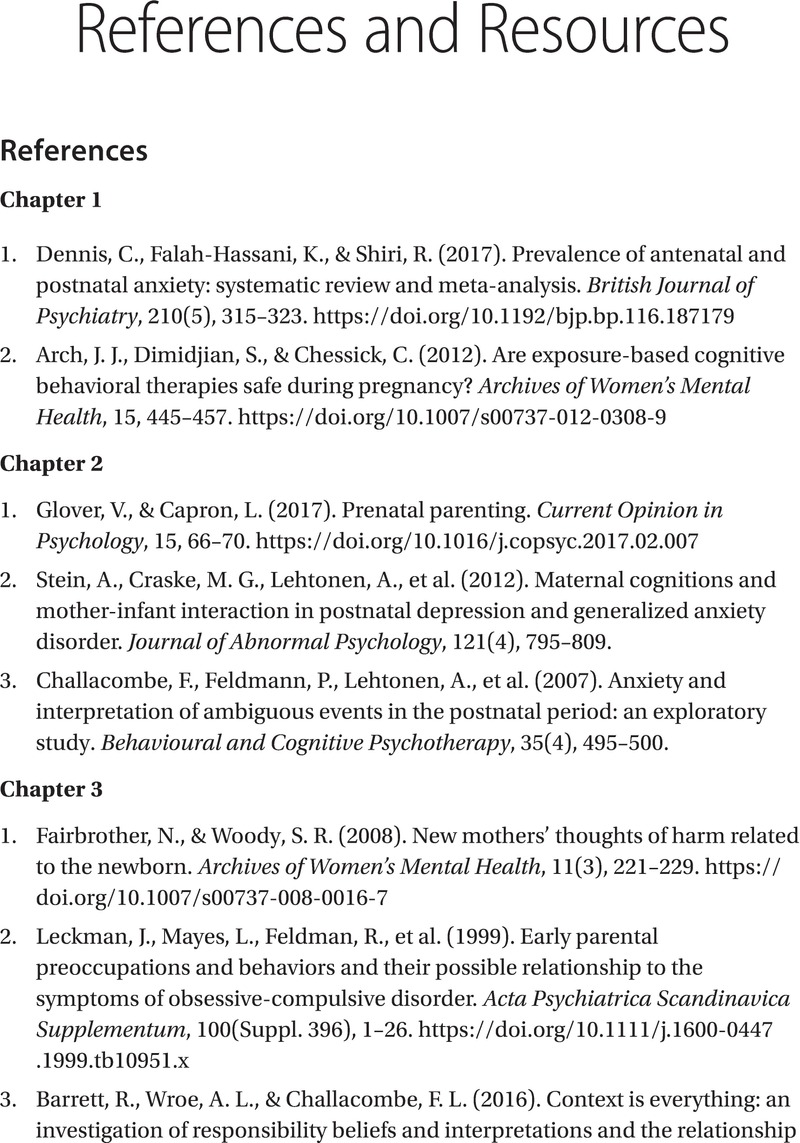 Break Free from Maternal Anxiety
Break Free from Maternal Anxiety Book contents
- Reviews
- Break Free from Maternal Anxiety
- Break Free from Maternal Anxiety
- Copyright page
- Dedication
- Contents
- About the Authors
- How to Use This Book
- Acknowledgements
- 1 Introduction
- 2 Persistent and Distressing Worry
- 3 Unwanted Intrusive Thoughts of Harm (Obsessive Compulsive Disorder)
- 4 Specific Phobias Affecting Pregnancy and the Postnatal Period
- 5 Panic Attacks and Health Worries
- 6 Feeling Anxious Around Other People
- 7 Coping with Traumatic Experiences While Pregnant and After Birth
- 8 Anxiety About Pregnancy and Birth
- 9 Anxiety and Adjusting to Motherhood
- 10 Beyond the Perinatal Period: Taking Your New Skills Forward into Parenthood
- Appendices
- References and Resources
- Selected Resources (A Complete List Can Be Found Online)
- Index
- References
References and Resources
Published online by Cambridge University Press: 13 October 2022
- Reviews
- Break Free from Maternal Anxiety
- Break Free from Maternal Anxiety
- Copyright page
- Dedication
- Contents
- About the Authors
- How to Use This Book
- Acknowledgements
- 1 Introduction
- 2 Persistent and Distressing Worry
- 3 Unwanted Intrusive Thoughts of Harm (Obsessive Compulsive Disorder)
- 4 Specific Phobias Affecting Pregnancy and the Postnatal Period
- 5 Panic Attacks and Health Worries
- 6 Feeling Anxious Around Other People
- 7 Coping with Traumatic Experiences While Pregnant and After Birth
- 8 Anxiety About Pregnancy and Birth
- 9 Anxiety and Adjusting to Motherhood
- 10 Beyond the Perinatal Period: Taking Your New Skills Forward into Parenthood
- Appendices
- References and Resources
- Selected Resources (A Complete List Can Be Found Online)
- Index
- References
Summary

- Type
- Chapter
- Information
- Break Free from Maternal AnxietyA Self-Help Guide for Pregnancy, Birth and the First Postnatal Year, pp. 329 - 331Publisher: Cambridge University PressPrint publication year: 2022
